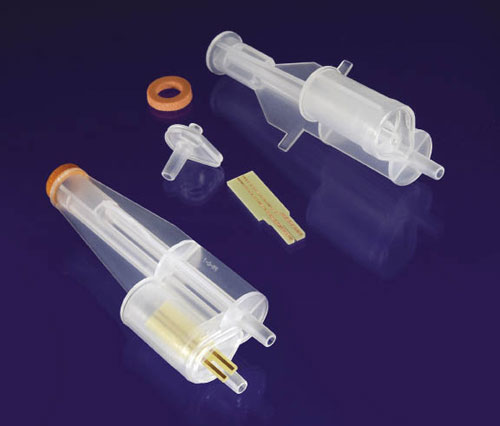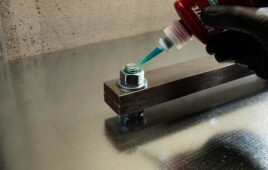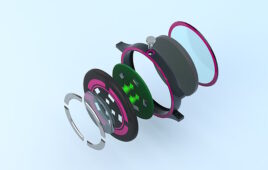Designing and molding complex sealing assemblies for electronic devices can be a challenge. One method used for testing electronic devices is a contamination tester with a test collection cell assembly. These test cell collectors are single use devices designed to insert easily into the contamination tester. Each cell assembly is required to perform consistently at a high quality level. When testing an electronic device for contamination, such as a printed circuit board (PCB), a test collection cell assembly should be clean, have vacuum seal capabilities, and be made of high-grade thermoplastics that withstand extreme heating temperatures.
PCB testers check areas of circuitry that are most sensitive and prone to performance issues, as small as 0.1 in2. A contamination test cell assembly extracts 2.5 mL samples from the circuitry surface and enters the residue into the contamination tester. After the sample is evaluated, the results determine if any residual effects pose potential detriment to the PCB.
To meet the challenge of improving a test cell design, Minnesota Rubber and Plastics conducted a complete evaluation of the original test cell design, material, mold design and process, final assembly, testing and packaging were provided. The evaluation found issues with cooling path deficiencies in the component molds. This fault in the molds prevented the needed alignment on the internal cell pathways and snap-fit design.

An electrode fits into two slots in the medical grade polypropylene cell body.
The cell assembly also needed to test consistently at 24 in.Hg. with a 50% vacuum seal improvement. To achieve vacuum improvement and testing consistency, the company changed the assembly’s base material with a higher quality polypropylene. In addition, it improved cooling lines in the mold; refined molded part dimensions to increase component stability; and, designed a new machine molding cycle to achieve desired moldability and component cooling.
To enhance cleanliness of the cell’s internal components prior to assembly, a recirculating and filtering tank cleaning system, along with a parts drying oven on all components was used. After cleaning and drying the test cells, each cell was assembled and prepared for inspection. Clearing inspection, the test cells are packaged in four trays of 25 cells, bagged and boxed with outer barcode labels ensuring material lot and part traceability. This set up in production allows the company to handle all volume requirements on a just-in-time basis.
Minnesota Rubber and Plastics
www.mnrubber.com





Tell Us What You Think!